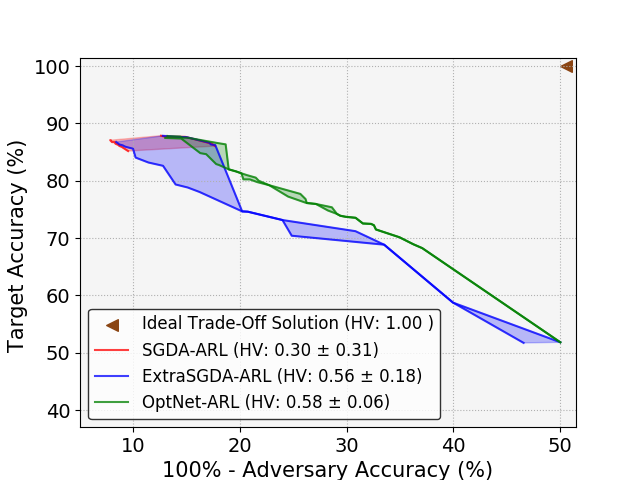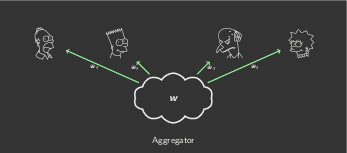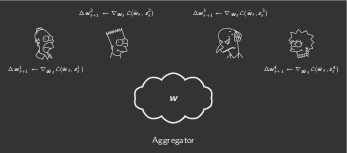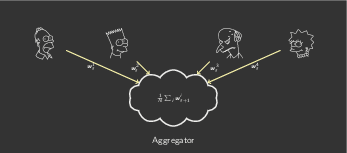Fairness and Privacy in Artificial Intelligence
RAISE
Vishnu Boddeti
March 24, 2021
VishnuBoddeti
Progress In Artificial Intelligence
Speech Processing
Image Analysis
Natural Language Processing
Robotics
State-of-Affairs
(report from the real-world)
March 24, 2016


April 25, 2017


Feb. 09, 2018


- Boulamwini and Gebru, "Gender Shades:Intersectional Accuracy Disparities in Commercial Gender Classification," FAT 2018

Jan. 18, 2020

Today's Agenda
100 Years of Data Representations




Bias in Learning
- Training:
- Inference: Microsoft Gender classification


- Boulamwini and Gebru, "Gender Shades:Intersectional Accuracy Disparities in Commercial Gender Classification," FAT 2018
Privacy Leakage
- Training:
- Inference: Microsoft Smile classification
- Target Task
- Smile: 93.1%
- Privacy Leakage
- Gender: 82.9%










- B. Sadeghi, L. Wang, V.N. Boddeti, "Adversarial Representation Learning With Closed-Form Solvers," CVPRW 2020
Recklessly absorb all statistical correlations in data
So What?














Next Era of Data Representations


Controlling Semantic Information
- Target Concept: Smile & Private Concept: Gender
- Problem Definition:
- Learn a representation $\mathbf{z} \in \mathbb{R}^d$ from data $\mathbf{x}$
- Retain information necessary to predict target attribute $\mathbf{t}\in\mathcal{T}$
- Remove information related to a desired sensitive attribute $\mathbf{s}\in\mathcal{S}$



Technical Challenge
- How to explicitly control semantic information in learned representations?
- Can we explicitly control semantic information in learned representations?
A Subspace Geometry Perspective
- Case 1: when $\mathcal{S} \perp \!\!\! \perp \mathcal{T}$ (Gender, Age)


- Case 3: when $\mathcal{S} \sim \mathcal{T}$ ($\mathcal{T}\subseteq\mathcal{S}$)

- Case 2: when $\mathcal{S} \not\perp \!\!\! \perp \mathcal{T}$ (Car, Wheels)





- B. Sadeghi, L. Wang, V.N. Boddeti, ‘‘Adversarial Representation Learning with Closed-Form Solutions," CVPRW 2020
Practical Applications
Application-1: Fair Classification
- UCI Adult Dataset (creditworthiness, gender)
| Method | Income | Gender | $\Delta^*$ |
|---|---|---|---|
| Raw Data | 84.3 | 98.2 | 22.8 |
| Remove Gender | 84.2 | 83.6 | 16.1 |
| Our Approach | 84.1 | 67.4 | 0.0 |
Fair Classification: Interpreting Encoder Weights

Application-2: Mitigating Privacy Leakage


- CelebA Dataset (smile, gender)
| Method | Smile | Gender | $\Delta^*$ |
|---|---|---|---|
| Raw Data | 93.1 | 82.9 | 21.5 |
| Zero-Sum game | 91.8 | 72.5 | 11.1 |
| Our Approach | 92.5 | 61.4 | 0.0 |
Application-3: Mitigating Privacy Leakage

Application-4: Illumination Invariance

- 38 identities and 5 illumination directions
- Target: Identity Label
- Sensitive: Illumination Label
| Method | $s$ (lighting) | $t$ (identity) |
|---|---|---|
| Raw Data | 96 | 78 |
| NN + MMD (NeurIPS 2014) | - | 82 |
| VFAE (ICLR 2016) | 57 | 85 |
| Zero-Sum Game (NeurIPS 2017) | 57 | 89 |
| Our Approach | 20 | 86 |
Privacy Preserving AI
Privacy Leakage in Augmented Reality

- Pittaluga et. al., "Revealing Scenes by Inverting Structure from Motion Reconstructions", CVPR 2019
Information Leakage from Gradients


- Yonetani et. al., "Privacy-Preserving Visual Learning Using Doubly Permuted Homomorphic Encryption", ICCV 2017
Learning from Private Data: Federated Learning




- Distributed learning of parameters from private data.
- Clients download current global model $\bar{\mathbf{w}_t}$.
- Client updates model from local data.
- Aggregator updates global model
- Yonetani et. al., "Privacy-Preserving Visual Learning Using Doubly Permuted Homomorphic Encryption", ICCV 2017
So What?

$\dots$ consent should be given for all purposes $\dots$
Encryption: The Holy Grail?
- Data encryption is an attractive option for protection.
- protects user's privacy
- enables free and open sharing
- mitigate legal and ethical issues
efficient learning directly from encrypted data
efficient inference directly on encrypted data
Learning from Private Data
Homomorphic Encryption for Learning Sparse Models


| Methods | Accuracy | Privacy |
|---|---|---|
| LLWT15 | 87 | No |
| DP | 78 | Yes |
| DP+SGD | 64 | Yes |
| Our Approach | 84 | Yes |


| Method | Average Precision | Privacy |
|---|---|---|
| DP | 0.546 | Yes |
| DP+SGD | 0.704 | Yes |
| Our Approach | 0.729 | Yes |
- Yonetani et. al., "Privacy-Preserving Visual Learning Using Doubly Permuted Homomorphic Encryption", ICCV 2017
Inference on Private Data
Amortized Homomorphically Encrypted Inner Products




- V.N. Boddeti, "Secure Face Matching Using Fully Homomorphic Encryption,", BTAS 2018
Open Problems
- How do we mitigate bias in AI?
- How do we ensure AI systems do not violate user privacy?
- Understand fundamental trade-off between utility and fairness.
- Understand fundamental trade-off between utility and privacy.
- $\dots$
Summary
- Today's AI systems are biased and violate user's privacy.
- How do we make AI systems fair and privacy-preserving?
- Many unanswered open questions and practical challenges.

